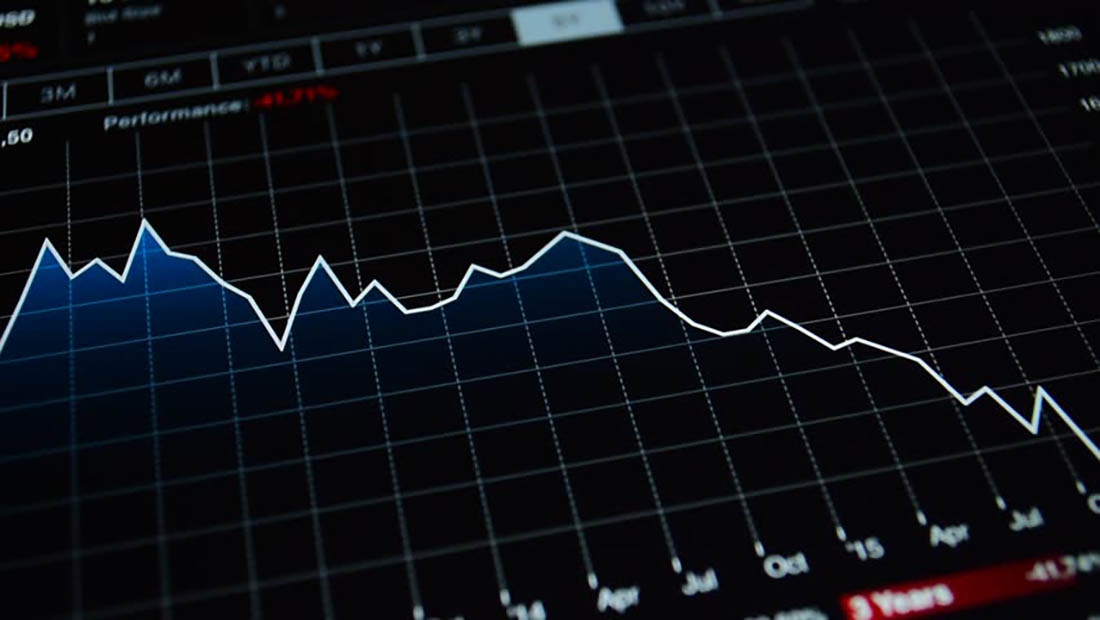(VIANEWS) – Nuveen Arizona Premium Income Municipal Fund (NAZ), WhiteHorse Finance (WHF), Astrazeneca (AZN) are the highest payout ratio stocks on this list.
We have congregated information about stocks with the highest payout ratio up to now. The payout ratio in itself isn’t a guarantee of good investment but it’s an indicator of whether dividends are being paid and how the company chooses to issue them.
When investigating a potential investment, the dividend payout ratio is a good statistic to know so here are a few stocks with an above 30% percent payout ratio.
1. Nuveen Arizona Premium Income Municipal Fund (NAZ)
2000% Payout Ratio
Nuveen Arizona Quality Municipal Income Fund is a closed ended fixed income mutual fund launched by Nuveen Investments, Inc. The fund is managed by Nuveen Asset Management, LLC. It invests in the fixed income markets of Arizona. The fund invests in municipal securities and other related investments the income, exempt from regular federal and Arizona income taxes that are rated Baa or BBB or better and having an average maturity of 18.66 years. It employs fundamental analysis with bottom-up stock picking approach to create its portfolio. The fund benchmarks the performance of its portfolio against the Standard & Poor's (S&P) Arizona Municipal Bond Index and Standard & Poor's (S&P) National Municipal Bond Index. The fund was formerly known as Nuveen Arizona Premium Income Municipal Fund. Nuveen Arizona Quality Municipal Income Fund was formed on November 19, 1992 and is domiciled in the United States.
Earnings Per Share
As for profitability, Nuveen Arizona Premium Income Municipal Fund has a trailing twelve months EPS of $-0.13.
The company’s return on equity, which measures the profitability of a business relative to shareholder’s equity, for the twelve trailing months is negative -14.88%.
Volume
Today’s last reported volume for Nuveen Arizona Premium Income Municipal Fund is 134026 which is 440.34% above its average volume of 24804.
2. WhiteHorse Finance (WHF)
213.24% Payout Ratio
WhiteHorse Finance, LLC is a business development company.
Earnings Per Share
As for profitability, WhiteHorse Finance has a trailing twelve months EPS of $0.68.
PE Ratio
WhiteHorse Finance has a trailing twelve months price to earnings ratio of 18.44. Meaning, the purchaser of the share is investing $18.44 for every dollar of annual earnings.
The company’s return on equity, which measures the profitability of a business relative to shareholder’s equity, for the twelve trailing months is 4.74%.
Sales Growth
WhiteHorse Finance’s sales growth is negative 2.7% for the present quarter and negative 4.2% for the next.
Yearly Top and Bottom Value
WhiteHorse Finance’s stock is valued at $12.54 at 10:23 EST, below its 52-week high of $13.88 and way higher than its 52-week low of $11.13.
Dividend Yield
According to Morningstar, Inc., the next dividend payment is on Dec 18, 2023, the estimated forward annual dividend rate is 1.54 and the estimated forward annual dividend yield is 12.25%.
3. Astrazeneca (AZN)
76.72% Payout Ratio
AstraZeneca PLC, a biopharmaceutical company, focuses on the discovery, development, manufacture, andcommercialization of prescription medicines. The company's marketed products include Calquence, Enhertu, Faslodex, Imfinzi, Iressa, Koselugo, Lumoxiti, Lynparza, Orpathys, Tagrisso, and Zoladex for oncology; Andexxa/Ondexxya, Atacand, Atacand HCT, Atacand Plus, Brilinta/Brilique, Bydureon/Byetta, BCise, Byetta, Crestor, Evrenzo, Farxiga/Forxiga, Komboglyze/Kombiglyze XR, Lokelma, Onglyza, Qtern, Xigduo/Xigduo, and Zestril XR for cardiovascular, renal, and metabolism diseases; Accolate, Accoleit, Vanticon, Bevespi Aerosphere, Breztri Aerosphere, Bricanyl Respules and Turbuhaler, Daliresp/Daxas, Duaklir Genuair, Fasenra, Pulmicort, Rhinocort, Saphnelo, Symbicort, and Tezspire for respiratory and immunology; and Kanuma, Soliris, Strensiq, and Ultomiris for rare diseases. Its marketed products also comprise Synagis for respiratory syncytial virus; Fluenz Tetra/FluMist Quadrivalent for Influenza; and Vaxzevria and Evusheld for covid-19. The company serves primary care and specialty care physicians through distributors and local representative offices in the United Kingdom, rest of Europe, the Americas, Asia, Africa, and Australasia. It has a collaboration agreement with Neurimmune AG to develop and commercialize NI006; and Personalis, Inc, as well as research collaboration with Sernova Corp. to evaluate novel potential therapeutic cell applications; and collaboration with Cholesgen (Shanghai) Co.Ltd. to advance research and development in hypercholesterolemia and related metabolic diseases, as well as a collaboration with BioCity Biopharma to evaluate a monoclonal antibody for the treatment of advanced hepatocellular carcinoma and a collaboration agreement with Cellectis. The company was formerly known as Zeneca Group PLC and changed its name to AstraZeneca PLC in April 1999. AstraZeneca PLC was incorporated in 1992 and is headquartered in Cambridge, the United Kingdom.
Earnings Per Share
As for profitability, Astrazeneca has a trailing twelve months EPS of $1.89.
PE Ratio
Astrazeneca has a trailing twelve months price to earnings ratio of 35.01. Meaning, the purchaser of the share is investing $35.01 for every dollar of annual earnings.
The company’s return on equity, which measures the profitability of a business relative to shareholder’s equity, for the twelve trailing months is 16.32%.
Yearly Top and Bottom Value
Astrazeneca’s stock is valued at $66.17 at 10:23 EST, way under its 52-week high of $76.56 and higher than its 52-week low of $61.73.
Earnings Before Interest, Taxes, Depreciation, and Amortization
Astrazeneca’s EBITDA is 5.
Volume
Today’s last reported volume for Astrazeneca is 2364060 which is 58.43% below its average volume of 5687530.
Sales Growth
Astrazeneca’s sales growth is 6.8% for the current quarter and 13.1% for the next.
4. Templeton Emerging Markets Fund (EMF)
39.36% Payout Ratio
Templeton Emerging Markets Fund is a closed-ended equity mutual fund launched by Franklin Resources Inc. The fund is managed by Templeton Asset Management Ltd. It invests in the public equity markets of emerging market countries across the globe. The fund seeks to invest in stocks of companies operating across diversified sectors. It primarily invests in value stocks of companies. The fund employs fundamental analysis with a focus on such factors as long-term earnings, asset value, and cash flow potential to create its portfolio. It benchmarks the performance of its portfolio against the MSCI Emerging Markets Index. Templeton Emerging Markets Fund was formed on February 26, 1987 and is domiciled in the United States.
Earnings Per Share
As for profitability, Templeton Emerging Markets Fund has a trailing twelve months EPS of $1.03.
PE Ratio
Templeton Emerging Markets Fund has a trailing twelve months price to earnings ratio of 11.15. Meaning, the purchaser of the share is investing $11.15 for every dollar of annual earnings.
The company’s return on equity, which measures the profitability of a business relative to shareholder’s equity, for the twelve trailing months is 7.44%.
Dividend Yield
According to Morningstar, Inc., the next dividend payment is on Dec 14, 2023, the estimated forward annual dividend rate is 0.73 and the estimated forward annual dividend yield is 6.33%.
Yearly Top and Bottom Value
Templeton Emerging Markets Fund’s stock is valued at $11.48 at 10:23 EST, way under its 52-week high of $13.19 and higher than its 52-week low of $10.58.
Revenue Growth
Year-on-year quarterly revenue growth grew by 56.1%, now sitting on 8.58M for the twelve trailing months.
Moving Average
Templeton Emerging Markets Fund’s value is above its 50-day moving average of $11.40 and under its 200-day moving average of $11.61.
1. 1 (1)
1% Payout Ratio
1
Earnings Per Share
As for profitability, 1 has a trailing twelve months EPS of $1.
PE Ratio
1 has a trailing twelve months price to earnings ratio of 1. Meaning, the purchaser of the share is investing $1 for every dollar of annual earnings.
The company’s return on equity, which measures the profitability of a business relative to shareholder’s equity, for the twelve trailing months is 1%.
Growth Estimates Quarters
The company’s growth estimates for the present quarter and the next is 1% and 1%, respectively.
Stock Price Classification
According to the stochastic oscillator, a useful indicator of overbought and oversold conditions, 1’s stock is considered to be overbought (>=80).
Revenue Growth
Year-on-year quarterly revenue growth grew by 1%, now sitting on 1 for the twelve trailing months.
Volume
Today’s last reported volume for 1 is 1 which is 1% above its average volume of 1.











